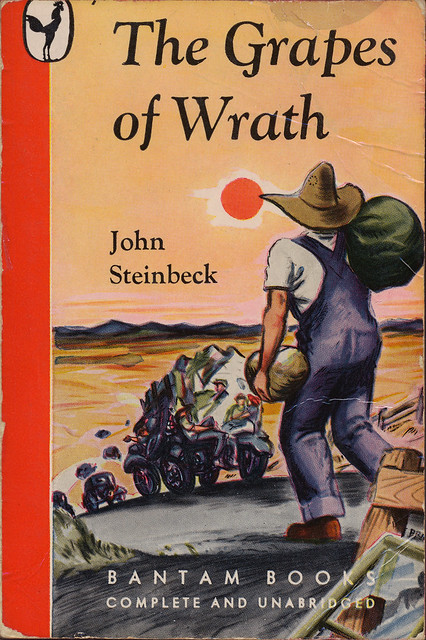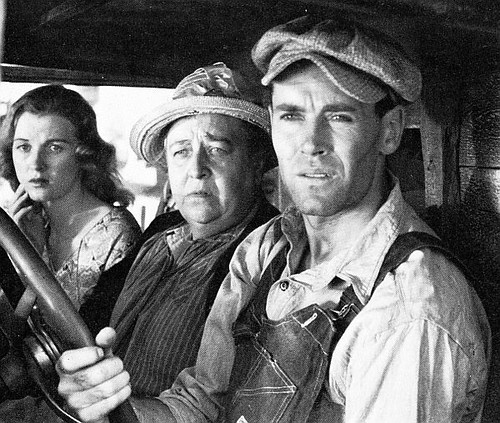
John Steinbeck’s famous novel about the Great Depression and a family’s Moses-like journey on Route 66, “The Grapes of Wrath,” was published 75 years ago today.
The National Steinbeck Center in Salinas, Calif., is marking the anniversary all year, and I’ll post a review of a new book about the writing of the novel when I’m done reading it.
In the meantime, NPR today posted a six-minute segment about the book and its impact on American culture and America in general.
Audio PlayerA print article of the NPR segment is here.
The Telegraph newspaper in England also posted “10 Surprising Facts” about Steinbeck’s novel. One of the excerpts:
In The Grapes of Wrath, Steinbeck became the first writer to refer to Route 66 – the two-lane, 2,448-mile-road that connects Chicago to Los Angeles – as the “Mother Road”. In doing so, he helped capture the road’s image of redemption and turn it into a cultural icon. The fictional Joad family of the novel was an example of the thousands of people migrating to California to escape the despair of the Dust Bowl states, and many used Route 66. “66 is the mother road,” Steinbeck wrote, “the road of flight.”
Steinbeck also reportedly adored Henry Fonda’s portrayal of Tom Joad in the film version of his book, as he should.
The definitive nonfiction book about the Dust Bowl is Timothy Egan’s “The Worst Hard Time,” which I recommend for its eye-popping accounts as well as its graceful writing. Strangely enough, it took more than 70 years after the disaster for someone to write a truly great account of the event.
Lest you think an environmental disaster such as the Dust Bowl won’t happen again, I’ve read reports on Facebook almost weekly of dust storms in eastern New Mexico and the Texas Panhandle. And, in an ironic twist, California — where the Joads journeyed to escape the dust — is suffering from a historic drought of its own.
(An image of the cover of a 1945 edition of “The Grapes of Wrath” by Make It Old via Flickr)

